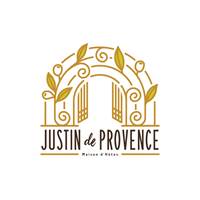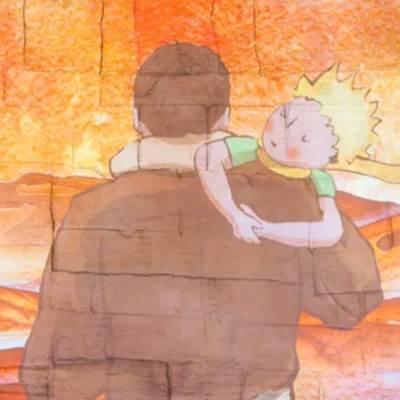
Careers of Enlightenment - The Little Prince
17 May 25From July 4, 2025
This summer, the Carrières des Lumières invites young and old alike on a magical journey with a unique immersive experience dedicated to The Little Prince, Antoine de Saint Exupéry's timeless masterpiece . In collaboration with the Antoine de Saint Exupéry Estate, this unique creation brings the author's words and watercolors to life, immersing you in a poetic and starry universe...
In 1943, Antoine de Saint Exupéry published "The Little Prince" in New York. The following year, he mysteriously disappeared over the Mediterranean Sea aboard his P-38 Lightning, leaving us this masterful work that quickly became a worldwide best-selling novel and a timeless literary classic.
Immersed in this poetic universe, accompany the Little Prince on his quest to understand and tame the world around him. Each sequence takes you to wondrous worlds, from the desert to asteroid B612, including the many planets he visits. With family, friends or alone, it's the ideal adventure to share emotions, imagination and unforgettable memories.
#carrieresdeslumieres;#lepetitprince;#bauxdeprovence
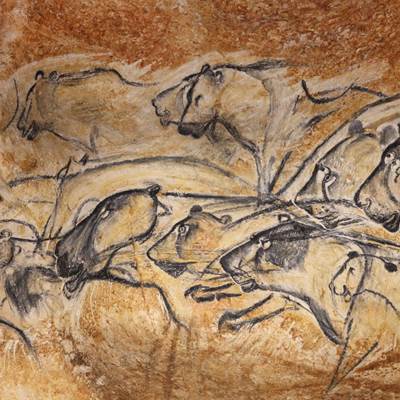
The Chauvet Cave 2 - Ardèche
25 Jan 25A timeless experience
Between shadow and light, amidst stalactites, stalagmites, draperies, gours and bones, the visitor feels the coolness of the cave and discovers the 14 animal species drawn or engraved on the walls. For an hour, outside of time, we walk in the footsteps of our ancestors.
Accompanied by a guide , in a small group of around twenty people, we wander along a footbridge as in the original cave and discover, in crescendo, the 27 panels and the hundreds of animals represented.
Painted in red ochre, engraved with flint, traced with the finger or with charcoal, the bestiary comes to life as the techniques of blurring and perspective are mastered.
At the end of a 250-meter trail , punctuated by observation stations, the visitor enters the back room. 92 animals emerge from the darkness, most of which appear to be in motion . We are faced with the large panel of lions, a monumental composition twelve meters long, a masterpiece of mastery and innovation.
Their virtuosity, 36,000 years ago, made these painters accomplished artists of prehistory and takes us back to the origins of art.
#grottechauvet2;#ardeche
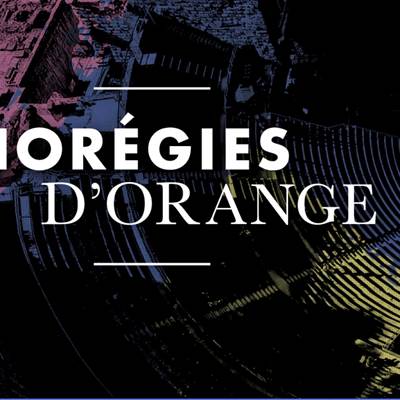
Chorégies d’Orange 2025,
24 Jan 25These 2025 Chorégies celebrate singing in all its forms since no less than nine evenings (out of thirteen) will be dedicated to it.
Beyond this essential and determined affirmation of imposing the voice in a place with such unique acoustics, it is a pleasure to underline that the greatest artists faithfully wish to associate themselves with our Festival.
The great eclecticism of this programming is also built around young people, whether artists... or the public!
After a remarkably successful 2024 edition (35,000 spectators), this new Chorégie is firmly on an optimistic trajectory, notably embodied by a new partnership with the Aix-en-Provence Festival.
Long live the Artists!!!
Jean-Louis Grinda
Director of the Chorégies d'Orange
https://www.choregies.fr/?lang=fr
#choregiesdorange

Careers of Enlightenment - Monet
24 Jan 25From January 31, 2025
In 2025, the Carrières des Lumières will present an immersive exhibition event dedicated to the illustrious Impressionist painter Claude Monet.
Through this digital retrospective, his luminous palette and compositions captured on the spot will bring to life the century-old walls of this historic place.
As an echo of the 150th anniversary of Impressionism, this monograph offers us a bold reading of Claude Monet's work, between his travels, his famous places of creation and his emblematic series, all brought to life through the prism of digital art.
An experience worthy of the revolution represented by the advent of this movement and the international renown of the artist.
Artistic direction: Nicolas Charlin / Staging and animation: Cutback / Musical supervision and mixing: Start-Rec / Production: Culturespaces Studio®
#carrieresdeslumieres;#monet;#impressionnisme;#bauxdeprovence_
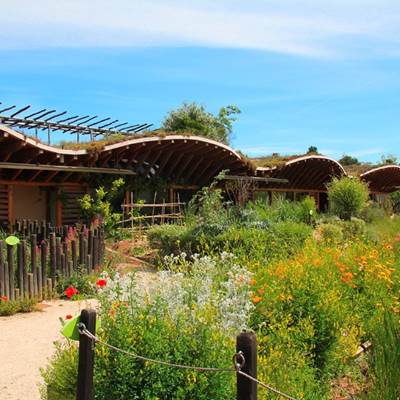
Naturoptère - Sérignan du Comta
24 Jan 25Come and take a closer look!
Le Naturoptère is a cultural and educational center dedicated to nature and the environment . It is a place of discovery and exchange.
This unique site in France in the heart of Sérignan-du-Comtat offers a wide variety of activities linked to its mission of environmental education and sustainable development: visits to exhibitions and gardens highlighting biodiversity, workshops for families and schools, training and nature walks, shows and conferences throughout the year.
Our very eclectic program is aimed at all audiences: children, adults, families, beginners or experienced naturalists, artists, the curious...
Since 2017, Naturoptère has been supported by the Université Populaire Ventoux, an association that participates in the revitalization of the Vaucluse region . It is also an inclusive company with permanent employees and employees on opportunity contracts who train for a time in one or more sectors before accessing training or lasting employment.
#naturoptere;#serignanducomtat
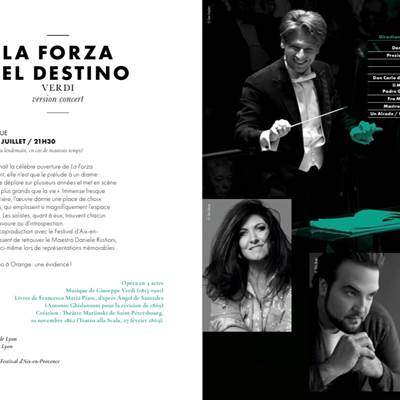
LA FOR ZA DE L DESTINO VERDI concert version ANTIQUE THEATER SUNDAY JULY 20 / 9:30 PM Duration: 2h55 (Postponed to the next day in case of bad weather)
24 Jan 25THE FOR ZA
OF DESTINY
GREEN
concert version
ANCIENT THEATRE
SUNDAY JULY 20 / 9:30 PM
Duration: 2h55 (Postponed to the next day in case of bad weather)
Everyone knows the famous opening of La Forza
del Destino. However, it is only the prelude to a drama
exceptional, which unfolds over several years and features
""larger than life"" characters. Huge fresco
loving and warlike, the work gives pride of place
to the great choirs, which fill the space so magnificently
of the Ancient Theatre. The soloists, for their part, each find
their moment of bravery or introspection.
The Chorégies, in co-production with the Aix-en-Provence Festival
Provence, are delighted to be reunited with Maestro Daniele Rustioni,
who had triumphed here during memorable performances
from La Traviata.
The Forza del Destino in Orange: a no-brainer!
Opera in 4 acts
Music by Giuseppe Verdi (1813-1901)
Libretto by Francesco Maria Piave, after Ángel de Saavedra
(Antonio Ghislanzoni for the 1869 revision)
Creation: Mariinsky Theatre of Saint Petersburg,
November 10, 1862 (Teatro alla Scala, February 27, 1869).
Lyon Opera Orchestra
Choirs of the Lyon Opera
Co-production with the Aix-en-Provence Festival
#choregiesdorange;#festivallyrique;#theatreantiquedorange;#operaenpleinair;#concertsclassiques;#evenementsculturelsenprovence;#musiqueclassique;#orange;#opéraenprovence;#saisonlyrique;#orange;#balletsetoperas
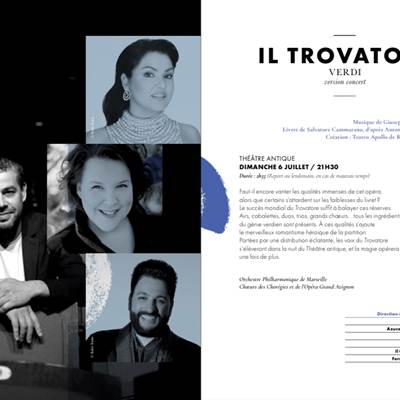
ANCIENT THEATRE SUNDAY JULY 6 / 9:30 PM Duration: 2h35 (Postponed to the next day in case of bad weather)
24 Jan 25THE TROVATOR
GREEN
mercion concert
Opera in 4 acts
Music by Giuseppe Verdi (i813-1901)
Libretto by Salvatore Cammarano, after Antonio Garcia Gutierrez
Premiere: Teatro Apollo in Rome, January 19, 1853
ANCIENT THEATRE
SUNDAY JULY 6 / 9:30 PM
Duration: zh35 (Postponed to the next day, in the case of remorseful husbands) It is still necessary to praise the immense qualities of this opera.
while some dwell on the weaknesses of booklet 2
The worldwide success of Trovatore is enough to sweep away these reservations. Airs, cabalettas, duets, trios, large choruses... all the ingredients of Verdi's genius are present. Added to these qualities are
the wonderful heroic romanticism of the score. Carried by a brilliant cast, the voices of the Trovatore will rise in the night of the Ancient Theatre, and the magic will operate
once again.
Marscille Philharmonic Orchestra
Shoes of the Chorégies and the Grand Arignon Opera
Musical direction Jader B
Leonard Trinetet
Arucend Moris Nicole te
Inez Claire de Monter
Monrico on fun?
The Story of Luna by Alekiei Legev
Ferrando Riccardo Zanellate
#choregiesdorange;#festivallyrique;#theatreantiquedorange;#operaenpleinair;#concertsclassiques;#evenementsculturelsenprovence;#musiqueclassique;#orange;#opéraenprovence;#saisonlyrique;#orange;#balletsetoperas

ANCIENT THEATRE SATURDAY JUNE 28 / 9:30 PM Mozart's Requiem
24 Jan 25MOZART
REQUIEM
Illustrated by Enki Bilal
Wolfgang Amadeus Mozart
Requiem Mass, in D minor, KV 626 (1791)
First part to be defined
ANCIENT THEATRE
SATURDAY JUNE 28 / 9:30 p.m.
(Postponed to the next day in case of bad weather)
Those who have seen the famous film Amadeus will remember this scene.
feverish where, living his last hours, Mozart, in a single breath, dictates
his final composition to a totally overwhelmed and stunned Salieri...
Of course, this scene never existed, but it nevertheless testifies
of the extraordinary evocative power of a music that seems to come
from a terrible and sweet beyond.
This work is a miracle. Our wonderful performers will try
to approach it.
The public, more than ever, will be their partner.
#choregiesdorange;#festivallyrique;#theatreantiquedorange;#operaenpleinair;#concertsclassiques;#evenementsculturelsenprovence;#musiqueclassique;#orange;#opéraenprovence;#saisonlyrique;#orange;#balletsetoperas
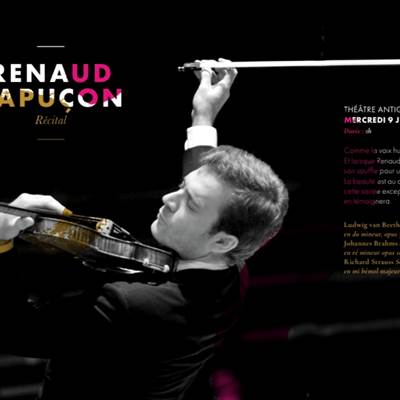
ANCIENT THEATRE WEDNESDAY JULY 9 / 9:30 PM Renaud CAPUCON
24 Jan 25ANCIENT THEATRE
WEDNESDAY JULY 9 / 9:30 PM
Duration: 2h
Like the human voice, the violin sings.
And when Renaud Capuçon plays, the mistral holds back
his breath for a magical moment.
Beauty is at the heart of the Chorégies project,
This exceptional evening in more ways than one
will testify to this.
Ludwig van Beethoven Violin Sonata No. 7
in C minor, opus 30 n°2 (1802)
Johannes Brahms Sonata for violin and piano no. 3
in D minor opus 108 (1886)
Richard Strauss Sonata for violin and piano
in E flat major opus 18 (1887
#choregiesdorange;#festivallyrique;#theatreantiquedorange;#operaenpleinair;#concertsclassiques;#evenementsculturelsenprovence;#musiqueclassique;#orange;#opéraenprovence;#saisonlyrique;#orange;#balletsetoperas
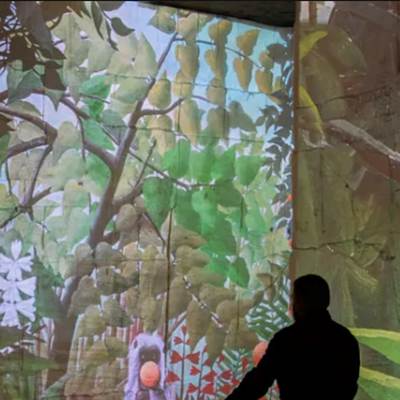
Careers of Enlightenment - Le Douanier Rousseau
24 Jan 25From January 31, 2025
The latest creation of the Carrières des Lumières takes visitors on a journey through the early days of naive art in France. Spontaneous, dreamlike, and sometimes childlike, this new approach to painting is embodied in the works of Henri Rousseau. At the end of the 19th century, this self-taught painter and pioneer of naive art drew his inspiration from detailed observations of vegetation and animals from elsewhere, from the greenhouses and menagerie of the Jardin des Plantes in Paris.
Mocked by his contemporaries, but admired by avant-gardists such as Delaunay, Apollinaire, Picasso and Kandinsky, his idealistic painting with its bright colours and clumsy perspectives would later allow him to free himself from the academic standards of the time by opening the way to modernity in painting.
Henri Rousseau makes visitors rediscover the Paris of the industrial era, populated by frozen characters who observe us under a sky where zeppelins and hot air balloons float. Without ever having left France, he also weaves the colorful story in the heart of a dense plant kingdom where the eyes of tigers pierce the foliage and the landscapes transport us to imaginary lands.
In this parallel universe where everyday reality is invaded by a profusion of dreamlike details, the man who was nicknamed "Customs Officer" because of his job at the Paris customs office, invites us to escape by dreaming with our eyes wide open, from France to a jungle with the scent of Eden.
Artistic direction: Virginie Martin / Design and production: Cutback / Musical supervision and mixing: Start-Rec / Production: Culturespaces Studio®
#carrieresdeslumieres;#bauxdeprovence;#ledouanierrousseau
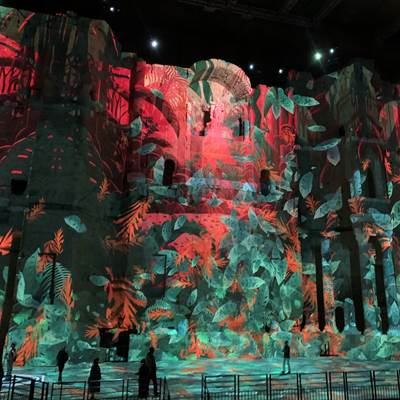
The Sound Odyssey
24 Jan 25Immersion in an extraordinary universe
The Ancient Theater of Orange, this extraordinary monument, has been at the forefront of innovation for 2000 years. The Ancient Theater offers the public a journey through the sound and musical riches of our world to discover mythology.
Enveloped by sound and image, you will come across a multitude of deities and mythological characters and cross marvelous and fantastic landscapes.
First videomapping generated by Artificial Intelligence
Today artificial ""intelligences"" write, draw, play, calculate and can be used with creativity and intelligence by the human mind.
For the Sound Odyssey, an entire universe inspired by these artificial intelligences has been developed. There are numerous settings, forests, plants, shapes, faces of the gods and goddesses of Antiquity that we invite you to come and discover.
https://www.odyssee-sonore.com/
#odysséesonore;#theatreantique;#orange
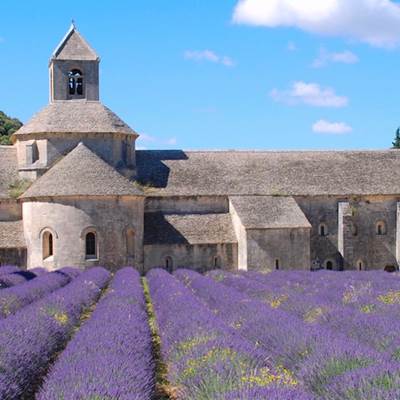
Abbey of Our Lady of Senanque
24 Jan 25For almost a thousand years, the Abbey of Notre-Dame de Sénanque has been home to a community of Cistercian Brothers who live in the purest monastic tradition, according to the Rule of Saint Benedict.
Seven times a day, the community gathers in the abbey church to celebrate the Divine Office.
The day of a Brother of Sénanque is divided between prayer and work.
In Sénanque, the lavender fields slowly take on their soft violet color. By the end of June the ears will be fully formed and the flowers full of essence. Between July 15 and 20, the Brothers will then be able to harvest the lavender ripened in the beautiful sun of Provence.
#abbaye;#notredamedesenanque
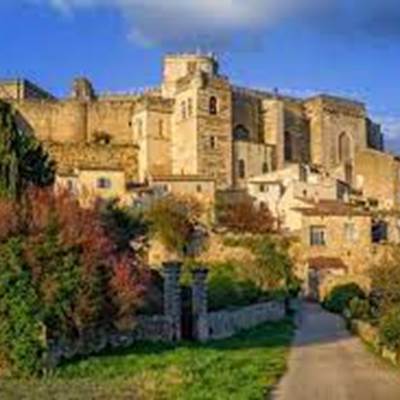
Grignan and its castle
24 Jan 25The history of Grignan is most often confused with the history of its castle and its successive residences.
The castral town, mentioned as early as 1105, developed in the 13th and 14th centuries, with the growing role of the powerful Adhémar de Monteil family, whose younger branch (the Adhémar de Grignan), definitively owned the seigneury from 1239.
The village, nestled at the foot of its castle, remained sheltered within its walls until the very end of the 15th century.
The first extension of the agglomeration will take place in the middle of the 16th century, with the creation of the large and small suburbs, the promenade and games of the Mail (1550), and the construction, outside the walls, of the grain hall (1553 ), at the current location of the town hall.
The construction of the Saint-Sauveur collegiate church (1535-1542) and the major embellishment work on the castle (1543-1557) which transformed the old medieval fortress into a sumptuous Renaissance palace still date from this same period.
The town and its castle will experience other hours of glory in the 17th century with François de Castellane Adhémar, Count of Grignan, who for nearly half a century exercised the functions of lieutenant general and governor of Provence.
His marriage to Françoise Marguerite de Sévigné in 1669 was the origin of the famous epistolary correspondence exchanged between the Marquise de Sévigné and her daughter, the Countess of Grignan.
From the 18th century, the memory of Madame de Sévigné and her rising literary glory saved the Château de Grignan from ruin and oblivion.
The modernization of the village in the 19th and 20th centuries accompanied economic development, while preserving the richness of its architectural heritage and the quality of its landscapes.
#chateaudegrignan;#marquisedesevigne;#grignan;#dromeprovencale
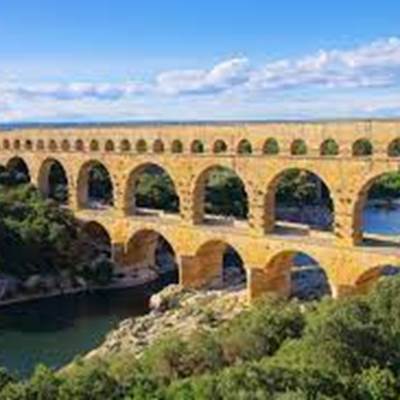
Pont du Gard
24 Jan 25The Pont du Gard is a three-level bridge intended for the passage of a Roman aqueduct . It is located between Uzès and Remoulins , not far from Nîmes , in the French department of Gard . It spans the Gardon . Probably built in the first half of the 1st century , it ensured the continuity of theRoman aqueduct which carried water from Uzès to Nîmes . According to the latest research, it would have ceased to be used at the beginning of the 6th century .
In the Middle Ages , the piles of the second floor were indented so that the work could be used as a road bridge . From the sixteenthcentury , the exceptional architecture of the Pont du Gard having attracted attention, the work benefited from regular restorations intended to preserve its integrity. A road bridge was attached to it in 1743-1747. The highest known aqueduct bridge in the Roman world, it is classified as a historic monument by the 1840 list 1 and was included on the UNESCO World Heritage List in December 1985.
#pontdugard
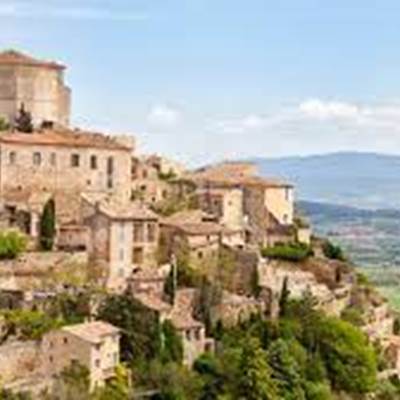
Gordes - Luberon Regional Natural Park
24 Jan 25Its history, its architectural and heritage richness, its breathtaking panoramas, landscapes and protected nature are all invitations to discover this little Provençal jewel.
Gordes is erected like a citadel offering to the gaze the witnesses of its past, majestic protective castle, massive church with defensive appearances, enclosure of tall buildings which overhang the precipice and the narrow streets allowing to escape the assaults of the Mistral,
The town developed from the 11th century around the fortified castle to become a real fortress protected by ramparts during the troubled periods of the Middle Ages.
The history of Gordes is marked during the Renaissance by the powerful Provencal family Simiane d'Agoult in the person of Bertrand Rambaud de Simiane who in the 16th century remodeled and enlarged the castle.
The modern age is laborious and industrious.
Agriculture remains the essential activity but most often it does not meet the needs of the population.
In the village, craft activities are developing: silk spinning mills, tanneries, shoemaking, and wool weaving which provide work and allow many Gordians to improve a difficult daily life.
In the 18th and early 19th century the village had a large population that rivaled that of neighboring towns, but despite a dynamic craft industry, particularly shoemaking, poverty and disease remained a scourge, infant mortality was high and a help is given to the poor.
From the end of the 19th and until the beginning of the 20th century Gordes underwent great upheavals-successive earthquakes leading to destruction, industrial changes, arrival of diseases which weaken agriculture, the war of 14-18, the great frost of 1956 -which lead to the decline of the population and the impoverishment of the inhabitants, a majority of whom fled to neighboring towns.
However, in the 1950s , after a period of crossing the desert, the destiny of the town took on new impetus. A host of artists, sensitive to the beauty of the village, fall under its spell and find in its isolation, its ruins, its light and its landscapes, a source of inspiration.
Today, the village, ranked among the most beautiful villages in France, is a popular destination of international renown.
#gordes;#luberon

Roussillon - The ocher trail
24 Jan 25Ocher is a natural pigment mixed with the sands of the cliffs. Iron oxide colors it from yellow to purplish. This mineral landscape has been shaped by the hand of man and by erosion.
Two routes (short or long) allow you a visit of 30 to 60 minutes, but you can also contemplate it for as long as you wish.
Discreet desks mark out your route for explanations on geology, flora, history, the ocher massif of the Luberon...
#roussillon;#sentierdesocres;#luberon
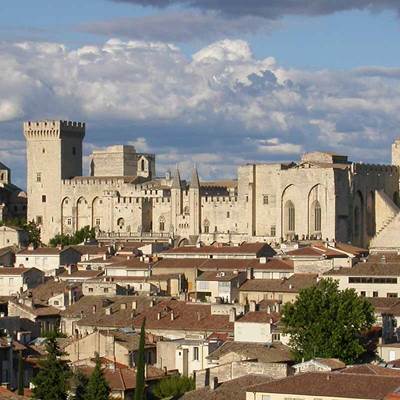
Avignon - The Palace of the Popes
24 Jan 25#avignon;#palaisdespapes
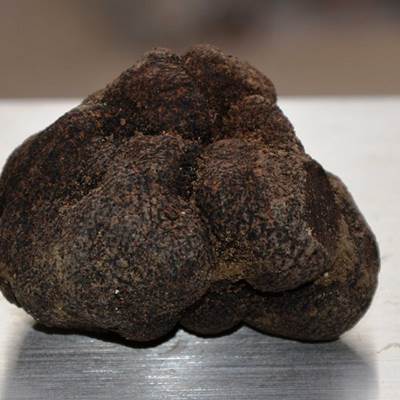
The Truffle Market of Saint-Paul-Trois-Chateaux
24 Jan 25Every Sunday from 10 a.m. to 12:30 p.m. from mid-December to mid-March: Saint Paul Trois Châteaux (reserved for individuals)
In the past, this market was aimed at professionals, from truffle growers to brokers. Today, in order to introduce this black diamond to a wider audience, the market is open to all lovers of this fabulous product from all regions.
The historic site of truffles and truffle fields is undoubtedly Le Tricastin. There we find 60% of national production. Tuber Melanosporum has always been a passion, a loaded history.
In the past, the black diamond was a mushroom consumed intensely, today it is a prestigious and rare product. Its woody flavor and powerful taste have stood the test of time; the truffle is still found in the same places, under an oak tree, in limestone soil and a Mediterranean-type climate. The Truffle is classified by botanists in the Thallophytes family, it is considered to be the fruit of a mushroom, which takes the form of an irregular and globular tuber covered with a type of bark with a smooth or rough appearance. whose color may vary, white, gray, black or white.
Tricastin is the center of French production of the famous black truffle (60% of national production). This prestigious "black diamond", once consumed intensely, has become rare and today constitutes a refined dish on the best tables.
Its specific characteristics have made it an even more mysterious and even unique product. Indeed, some cannot really explain its primarily underground life, its rare black color, its woody scent and its powerful taste.
This mushroom nevertheless seems to have found in our territory the very particular conditions to be born and develop naturally: a tree, preferably an oak, sufficiently calcareous soil and finally a Mediterranean type climate.
Yet nothing is ever truly acquired! Because the delicious Tuber Melanosporum, with its enchanting personality, will not necessarily reappear where the earth and men have generously given it what it nourished and takes its secrets with it. But when she is there, what joy!
The methods and vocabulary have not changed.
The Rabassiers are always accompanied by their faithful companion, both travel through the truffle fields; All that remains is to watch for the dog's attitude, his nose never fails him, nose to the ground, he will dig the ground until he discovers the Truffle. The Rabassier rushes to collect the truffle before his companion bites it. The dog will be rewarded with a piece of cake.
Truffle digging is a method not without difficulties. Because nothing indicates the presence of the black diamond in the ground. Only the dog is suitable for this work which requires training. Its predecessor, the pig, was much less docile, active and talented than the dog.
The Truffle is divided into three categories :
Extra for top quality truffles. Rounded and regular shape. Must not show any deterioration and must be greater than or equal to 20 grams.
Category I: This is a good quality truffle with some defects in color and shape. Its caliber greater than or equal to 10 grams.
Category II: these are all the remaining truffles provided they respect a size greater than or equal to 5 grams.
To visit
The House of Truffle and Tricastin
Republic street
26130 Saint Paul Trois Châteaux
Truffle market (November to March)
Monday: Chamaret
Tuesday: Grignan , Saint Paul Trois Châteaux
Wednesday: Valréas ((84)
Friday: Dieulefit
Saturday: Richerenches (84)
Sunday :Saint Paul Trois Châteaux (reserved for individuals)
Cavage
To discover this wonderful mushroom, don't hesitate to meet the truffle growers and cave (look for the truffle!) in their company!
Events
Truffle Festivals: Every 2nd Sunday in February – Saint-Paul-Trois-Chateaux
Cardoon and Truffle Market – Montbrizon-sur-Lez
Truffles, cardoons, chocolates, poultry, oysters and wines from Coteaux du Tricastin
Truffle menu and entertainment
#marchéauxtruffes;#truffe
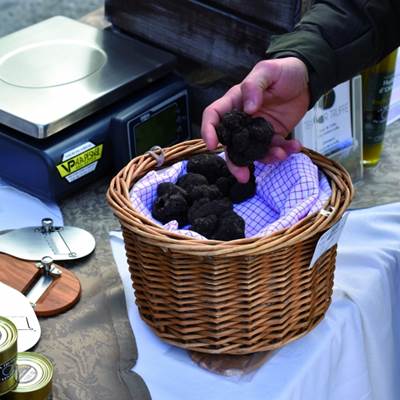
The truffle market and food market of Richerenches
24 Jan 25The Truffle Market
Every Saturday morning from mid-November to mid-March Capital of quality truffles: ""The famous tuber melanosporum"", Richerenches has acquired its reputation for a long time. Indeed, strong local production as well as particularly high-quality terroir have made Richerenches the most important truffle market! The official opening of the market begins in November (the Saturday following November 15), brokers, truffle growers, tourists and curious people meet on Avenue de la Rabasse and Cours du Mistral. Conversations revolve around a single subject: Truffles! After setting the price, transactions can begin. Around 1:00 p.m., the street empties as the scent of truffles fills the streets. This market is split into two, a market for local products and retail truffles, and a market reserved for professionals.
#marcheauxtruffes;#truffe;#richerenches

The crocodile farm in Pierrelatte
24 Jan 25In addition to its tourist aspect, this farm created in 1994 by Luc and Eric Fougeirol, actively participates in the conservation and protection of species by collaborating with scientists.
#lafermeauxcrocodiles
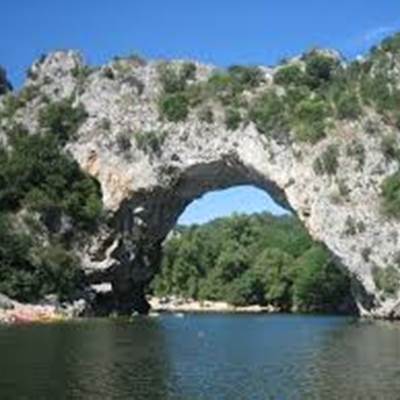
the Gorges de l'Ardèche
24 Jan 25The Gorges de l'Ardèche in Canoe
If you only have to do a canoe trip in your life, it is the Gorges de l'Ardèche, as the show is great and the environment remarkable.
The descent of the Gorges de l'Ardèche by canoe or kayak is accessible provided you meet a few prerequisites: Being in good physical condition, swimming, comply with safety instructions and ensure that the conditions of descent Gorges are good .
Upstream of the Gorges de l'Ardèche, many service providers rent canoes or kayaks and take care of you at the end of your descent.
The descent of the Gorges de l'Ardèche is about thirty kilometers, in one or two days.
Two bivouac areas exist and allow to "camp" in the middle of the Gorges de l'Ardèche, knowing that camping wild (outside these areas) is strictly prohibited.
Although the water of the Ardèche is often calm and limpid, the Gorges de l'Ardèche have no less than fifteen rapids, hence the importance of not leaving his lifejacket.
#lesgorgesdelardeche;#vallonpontdarc
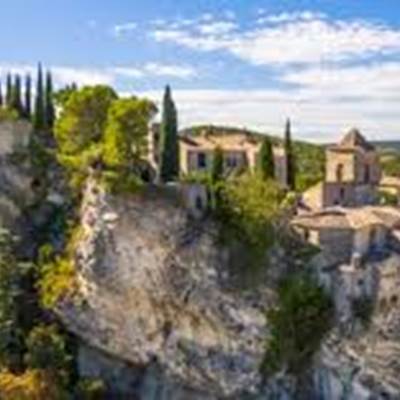
Vaison la Romaine - jewel of Roman Provence
24 Jan 25The city, of the highest archaeological interest, is divided by the river Ouvèze.
On the right bank are two neighborhoods, the site of the ancient Roman colony and the contemporary part of Vaison.
Archaeological excavations have revealed immense and luxurious Gallo-Roman houses with elaborate interior layout.
They were decorated with mosaic floors, marble marquetry, statues, basins, atriums and private baths ...
You will see during your visit, that the art of living was already refined and that they attached a lot of importance to the artistic creation! (description of the excavations of Puymin and Villasse sites at the tourist office).
In the Middle Ages, villagers settled in height, at the foot of the castle to protect themselves from looting and invasions.
The castle is now in ruins, the Upper Town is a picturesque site to visit.
Even if it climbs a bit steep, go to the top of the Haute Ville, the panorama offered on Vaison and its surroundings will largely reward your effort!
Thus, in the sumptuous setting of Mont Ventoux and the famous Dentelles de Montmirail, you will have traveled 20 centuries of history of Comtat Venaissin and Provence.
#vaisonlaromaine

Isle sur la Sorgue - Capital of antiquity and flea market - Venice Provençal
24 Jan 25Isle sur la Sorgue has many art galleries spread throughout the city.
The Sunday morning market, which is one of the most lively and colorful in Provence, the floating market in August.
#islesurlasorgue

The wine route
24 Jan 25The subsoil is mainly clay-limestone or sandy, with the presence of large pebbles rolled by the Rhone or terraces formed of calcareous gravel and old alluvium bordering the Rhone plain. There are 4 great terroirs:
The center: a chain of hills with sandstone soils;
The south-east: steep plain, very stony or gravelly terrain;
The west: a set of terraces formed of calcareous gravel and ancient alluvium bordering the Rhone plain;
The North :terroirs composed of large round pebbles rolled by the Rhone.
A production dominated by red wines
Red wines account for 72% of production, rosés 22% and whites 6%. This appellation affirms its personality within the Rhône Valley by the successful marriage of 6 red grape varieties: Syrah, Grenache, Carignan, Mourvèdre, Cinsault and newly introduced in the specifications, the Marselan. These are dark ruby-red wines, with red fruit coulis, blackcurrant and bigarreau; well balanced wines, frank, clean, vinous with a finish on ripe tannins.
#routedesvinsdeprovence;#cotesdurhone

New Castle of the Pope - Activities in the heart of the vineyard
24 Jan 25Ideally located, close to Avignon, we enjoy a cultural dynamism. Our small Provencal villages have kept their typicality, giving to discover the authentic image of Provence.
#chateauneufdupape;#routedesvinsdeprovence;#cotesdurhone
